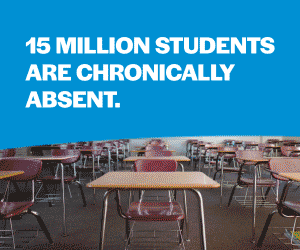 Chicago Public Schools hosts a community feedback session at Dyett High School about the budget for the 2025-26 school year. Many groups and policymakers have proposed various ideas for solving the district's financial issues. (Reema Amin / Chalkbeat)
Chicago Public Schools hosts a community feedback session at Dyett High School about the budget for the 2025-26 school year. Many groups and policymakers have proposed various ideas for solving the district's financial issues. (Reema Amin / Chalkbeat)
Chicago Public Schools has a $734 million problem.
That’s the size of the district’s budget deficit, which must be closed in the coming weeks in order for CPS to comply with state law requiring it to pass a balanced spending plan for the upcoming school year. District officials must release their budget proposal to the public by Aug. 13 for the board to pass by its Aug. 28 meeting.
Officials have not yet decided on how they’ll close the gap, but there are generally two approaches: Find more money, or make cuts. Last month, Chief Budget Officer Mike Sitkowski said CPS had so far reduced the deficit by $165 million through a series of layoffs and other cost-saving measures, leaving $569 million left to resolve. That number is now $519 million due to an unexpected $50 million increase in state money.
Even after the Board of Education passes a balanced budget this year, Chicago’s financial issues are not projected to go away. As it faces rising costs, CPS projects a $1.3 billion deficit by 2030.
So, where could CPS get more money? Are there expenses that can be cut?
Below is a list of various solutions that different groups, including CPS, civic organizations, and unions, have floated to close the gap.
This list does not include every idea but is meant to provide a small buffet of options. Some of these ideas are short-term fixes, meaning they solve the budget deficit this year but do not help increase revenue or reduce expenses down the road. Other ideas would provide long-term help, but may not help now. And many of the solutions would not be under the Board of Education’s control and would require another government entity to act.
All of the figures are estimates based on research done by advocacy organizations and budget experts who spoke to Chalkbeat. The numbers could fluctuate for different reasons. For example, it remains unclear how much CPS could actually issue in bonds. And the revenue potential from an additional tax on corporations would depend on how much corporations actually earn in the year that would go into effect.
Many of the timelines, including those that could take effect in fiscal year 2026, assume the soonest a government entity could take action on these proposals, but not necessarily if they would. For example, state lawmakers have not yet shown interest in calling a special session to address the district’s funding challenges.
Some officials, such as school board President Sean Harden, have made a case for a mixture of these solutions, such as borrowing money right now (a short-term fix) and pushing for more state revenue (a long-term fix).




























